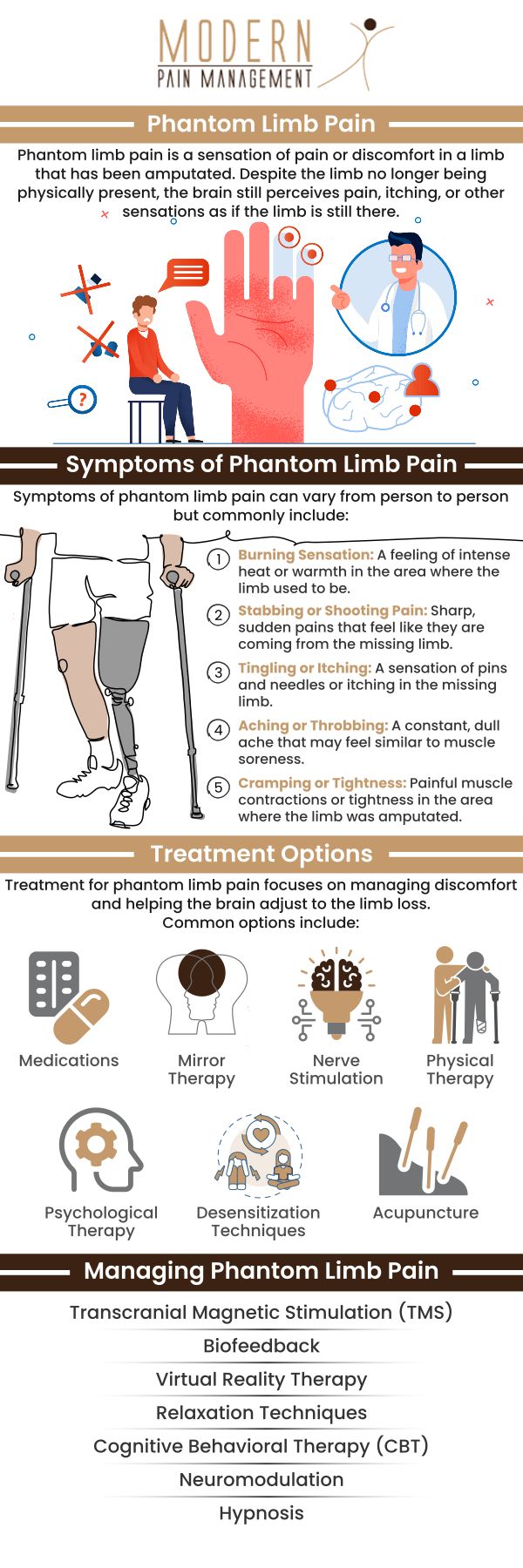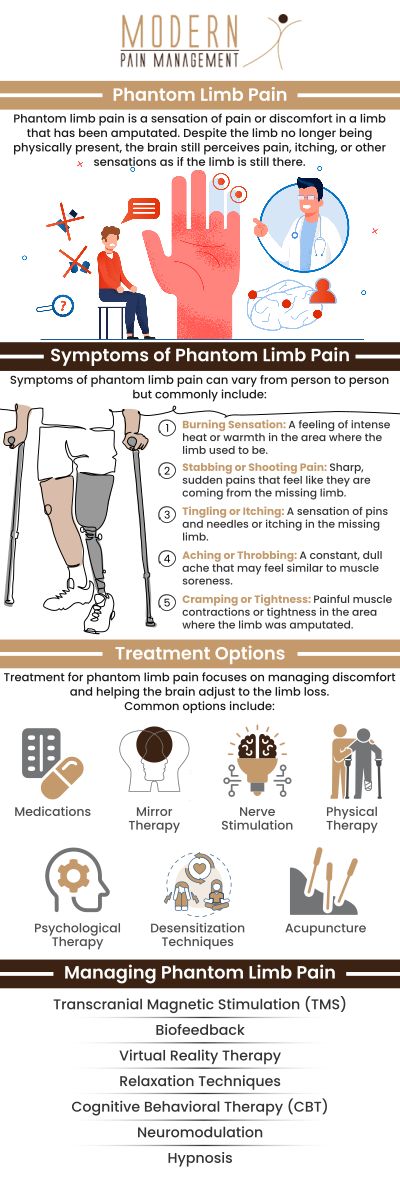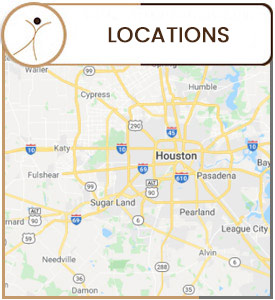Phantom Limb Pain Syndrome Treatment Specialist Q&A
Phantom limb pain refers to the sensation of pain or discomfort in a missing limb. PLP tends to occur as a result of amputation. We provide quality care to patients, who are living with phantom limb pain. Contact our board-certified doctor, Dr. George Atallah, D.O., at Modern Pain Management to get treatment for post-amputation limb pain. We have convenient locations to serve you in Houston TX and Sugar Land TX. For more information, please contact us or book an appointment online.




Table of Contents:
What are the causes and symptoms of phantom limb pain?
What happens during phantom limb syndrome?
What part of the brain does a phantom limb affect?
How does it feel to be amputated?
Phantom limb pain usually occurs soon after a limb has been lost. It can take on average three to six months for a wound to heal after an amputation operation. Rarely ever does the pain come months or years after a limb amputation.
Medical experts believe phantom pain is a result of a mix-up within the nervous system, which is the specific signals between the spinal cord and brain. When a body part becomes amputated, the nerve connections from the periphery within the brain remain in place. The brain can then misinterpret the information it is receiving or process the signals it’s receiving as a sensation of pain, even if the amputation portion has been removed.
There may still be pain that affects the remaining limb, which is known as the stump due to:
• Bruising
• Bone spur
• Bone infection
• Nerve damage
• Inflammation
• Poor blood flow
• Ill-fitted prosthetic device
• Pressure injuries
• Skin infections
• Wound infections
The noticeable symptoms can last for the first six months after an amputation, and the pain intensity and frequency of pain will begin to decrease over time, but many will continue to notice phantom pain occurring even up to two years after an amputation.
Phantom limb pain can feel like:
• Burning
• Aching
• Clamping
• Pinching
• Itching
• Tingling
• Shooting
• Stabbing
• Throbbing
• Twisting
A part of the brain is responsible for the processing of many sensory inputs as well as executing certain movements within the body, this means there is a mismatch between the movement that would have occurred if the limb was there, and the perception of the movement occurring.
Often individuals with amputated limbs will begin to feel different sensations within the region; however, the pain may be real, it’s the area in which the brain is processing the pain that is coming from that is not.
Neurons carry sensations to and from the specific limb that is having phantom pain to a region in the brain medically known as the somatosensory cortex, this is the area in the brain that receives information about pain, touch, temperature, and proprioception, which is the position in which a body is in from all over the body. Once an amputation has occurred, the somatosensory neurons are then deprived of their normal source of neuronal input, which means the neurons will begin to signal that sensations are occurring in certain parts of the body, which lead to the somatosensory cortex.
After someone has had an amputation operation, they may experience pain in an area of the limb which is no longer there. This experience is known as phantom limb pain. The pain is real, it is the phantom part that refers to the location of the pain, which is the missing limb or the area of the limb like toes or fingers.
Phantom limb pain can range from mild to quite severe and may last for seconds, hours, days, or even longer. It can occur after a medical amputation which is when a limb is removed after surgery, and it can occur after an accidental amputation, which is when you accidentally lose a finger, toe, or another body part. While many are worried about phantom limb pain after an operation, it is manageable.
There is a sudden sense of loss when you have an amputated limb. Particularly if you have had the limb for a greater part of your life, and are now having to get used to it not being there. Many other feelings come along with having an amputated limb, if you feel you need to speak to a professional about your amputation, contact one of our specialists today or reach out to your primary care doctor for a referral. We have convenient locations to serve you in Houston, TX, and Sugar Land, TX. Contact us for more information, or book your appointment online. We serve patients from Houston TX, Stafford TX, Sugar Land TX, Pearland TX, Missouri City TX, Jersey Village TX, and Richmond TX.
Check Out Our 5 Star Reviews

ADDITIONAL SERVICES YOU MAY NEED




